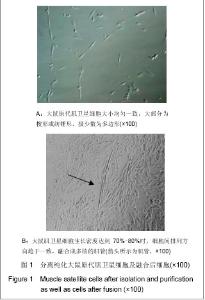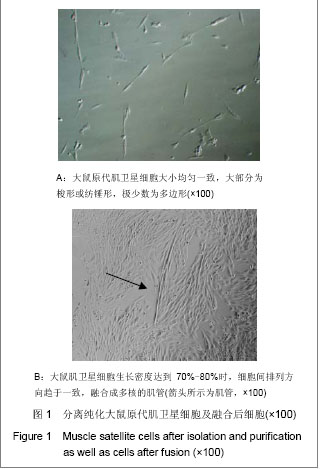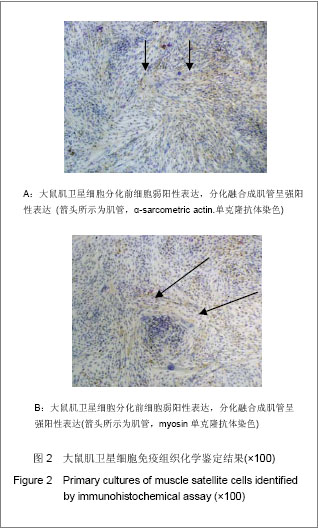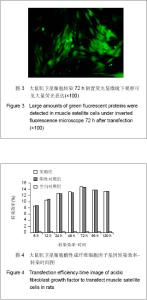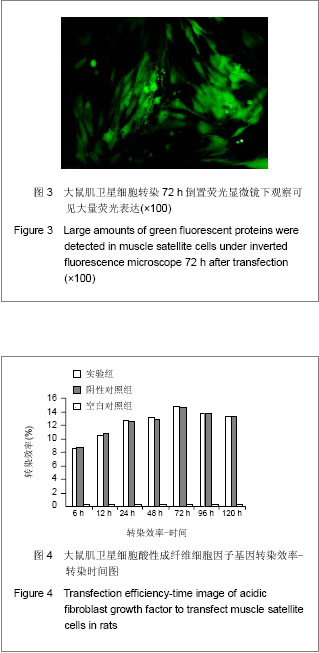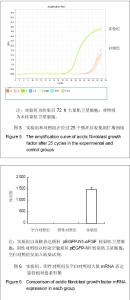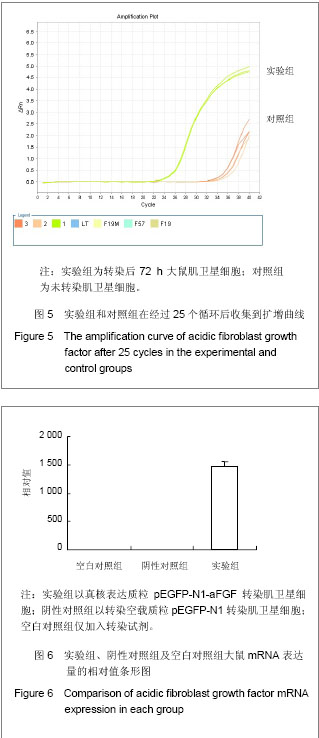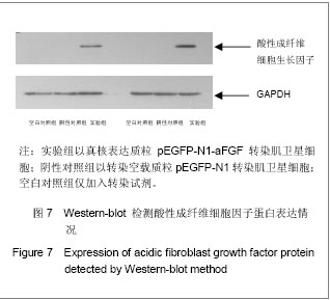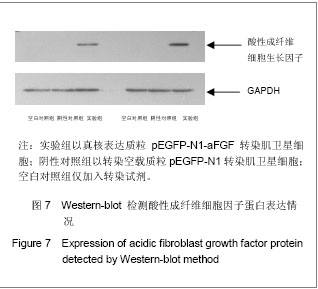| [1] Yang ZM.Zhongguo Xiufu Chongjian Waike Zazhi.2006;20(2): 95-97.杨志明.干细胞、组织工程与再生医学[J]. 中国修复重建外科杂志. 2006;20(2):95-97.[2] Meligy FY, Shigemura K, Behnsawy HM, et al.The efficiency of in vitro isolation and myogenic differentiation of MSCs derived from adipose connective tissue, bone marrow, and skeletal muscle tissue. In Vitro Cell Dev Biol Anim. 2012; 48(4):203-215.[3] Rochkind S. Phototherapy in peripheral nerve injury for muscle preservation and nerve regeneration. Photomed Laser Surg.2009;27(2):219-220.[4] Hawke TJ, Garry DJ. Myogenic satellite cells: physiology to molecular biology. J Appl Physiol.2001;91(2):534-551.[5] Yablonka-Reuveni Z. The skeletal muscle satellite cell: still young and fascinating at 50. J Histochem Cytochem.2011; 59(12):1041-1059.[6] Bujan J, Pascual G, Corrales C, et al. Muscle-derived stem cells in tissue engineering: defining cell properties suitable for construct design. Histol Histopathol. 2005;20(3):891-899.[7] Usas A, Maciulaitis J, Maciulaitis R, et al. Skeletal muscle-derived stem cells: implications for cell-mediated therapies.Medicina (Kaunas).2011;47(9):469-479.[8] Yang SA,Jin AM. Zhongguo Zuzhi Gongcheng Yanjiu yu Linchuang Kangfu. 2009;13(16):3089-3092.杨绍安, 靳安民. 富含酸性成纤维细胞生长因子纤维蛋白凝胶预防失神经支配运动终板退行性变的免疫组织化学研究[J]. 中国组织工程研究与临床康复. 2009;13(16):3089-3092.[9] McCully KK, Mulcahy TK, Ryan TE, et al. Skeletal muscle metabolism in individuals with spinal cord injury. J Appl Physiol. 2011;111(1):143-148.[10] Ashley Z, Salmons S, Boncompagni S, et al. Effects of chronic electrical stimulation on long-term denervated muscles of the rabbit hind limb. J Muscle Res Cell Motil. 2007;28(4-5): 203-217.[11] Kern H, Hofer C, Modlin M, et al. Denervated muscles in humans: limitations and problems of currently used functional electrical stimulation training protocols. Artif Organs. 2002; 26(3): 216-218.[12] Dornseifer U, Fichter A M, Leichtle S, et al. Peripheral nerve reconstruction with collagen tubes filled with denatured autologous muscle tissue in the rat model. Microsurgery. 2011;31(8): 632-641.[13] Jaeger M R, Braga-Silva J, Gehlen D, et al. End-to-end versus end-to-side motor and sensory neurorrhaphy in the repair of the acute muscle denervation. Ann Plast Surg. 2011; 67(4): 391-396.[14] Zakrzewska M, Marcinkowska E, Wiedlocha A. FGF-1: from biology through engineering to potential medical applications. Crit Rev Clin Lab Sci. 2008;45(1): 91-135.[15] Dayton WR, White ME. Cellular and molecular regulation of muscle growth and development in meat animals. J Anim Sci.2008;86(14 Suppl):E217-E225.[16] Mokalled MH, Johnson AN, Creemers EE, et al. MASTR directs MyoD-dependent satellite cell differentiation during skeletal muscle regeneration. Genes Dev; 2012;26(2):190-202.[17] Marques M J, Taniguti A P, Minatel E, et al. Nerve terminal contributes to acetylcholine receptor organization at the dystrophic neuromuscular junction of mdx mice. Anat Rec (Hoboken). 2007;290(2): 181-187.[18] Norrby M, Tagerud S. Mitogen-activated protein kinase-activated protein kinase 2 (MK2) in skeletal muscle atrophy and hypertrophy. J Cell Physiol. 2010; 223(1): 194-201.[19] Bujan J, Pascual G, Corrales C, et al. Muscle-derived stem cells in tissue engineering: defining cell properties suitable for construct design. Histol Histopathol. 2005;20(3): 891-899.[20] Zakrzewska M,Marcinkowska E,Wiedlocha A.FGF-1: from biology through engineering to potential medical applications. Crit Rev Clin Lab Sci.2008;45(1):91-135.[21] Jin B,Xu YB,Liu XS.Zhonghua Sunshang yu Xiufu Zazhi:Dianziban.2010;05(1):117-121.靳波,徐盈斌,刘旭盛. 酸性成纤维细胞生长因子生物学特性及其应用研究进展[J]. 中华损伤与修复杂志:电子版,2010,05(1): 117-121.[22] Cebasek V, Kubinova L, Janacek J, et al. Adaptation of muscle fibre types and capillary network to acute denervation and shortlasting reinnervation. Cell Tissue Res. 2007; 330(2): 279-289.[23] Nordblom J, Persson J K, Aberg J, et al. FGF1 containing biodegradable device with peripheral nerve grafts induces corticospinal tract regeneration and motor evoked potentials after spinal cord resection. Restor Neurol Neurosci.2012; 30(2):91-102.[24] Kastner S, Elias MC, Rivera AJ, et al. Gene expression patterns of the fibroblast growth factors and their receptors during myogenesis of rat satellite cells. J Histochem Cytochem, 2000;48(8):1079-1096.[25] Dong SH, Zang P, Wen JM, et al. Acidic fibroblast growth factor promotes the growth of skeletal muscle satellite cells: experiment with rabbits. Zhonghua Yi Xue Za Zhi.2007; 87(17):1195-1198.[26] Fukada S, Higuchi S, Segawa M, et al. Purification and cell-surface marker characterization of quiescent satellite cells from murine skeletal muscle by a novel monoclonal antibody. Exp Cell Res.2004;296(2):245-255.[27] Seale P, Rudnicki MA. A new look at the origin, function, and "stem-cell" status of muscle satellite cells. Dev Biol. 2000; 218(2):115-124. |
